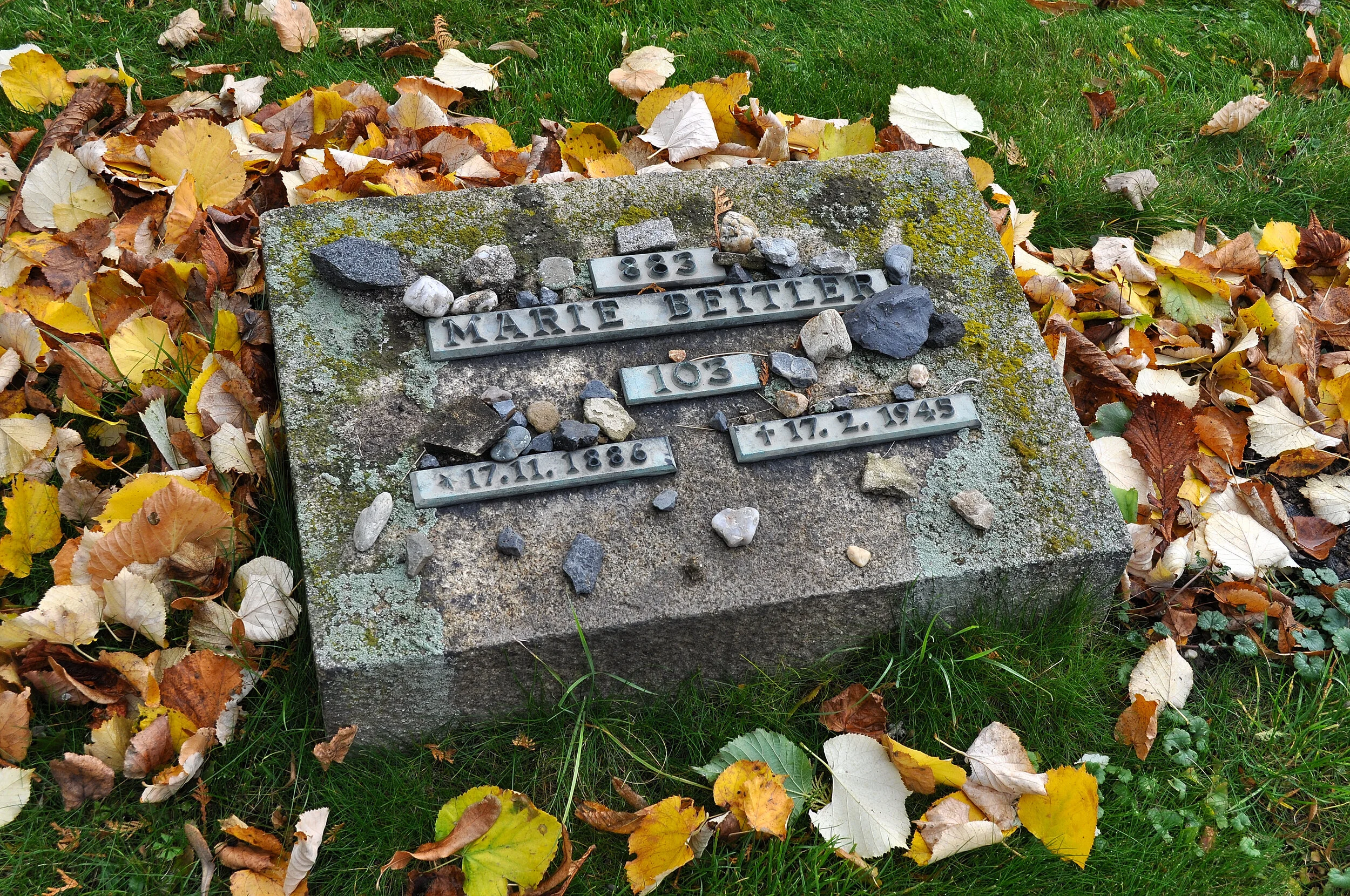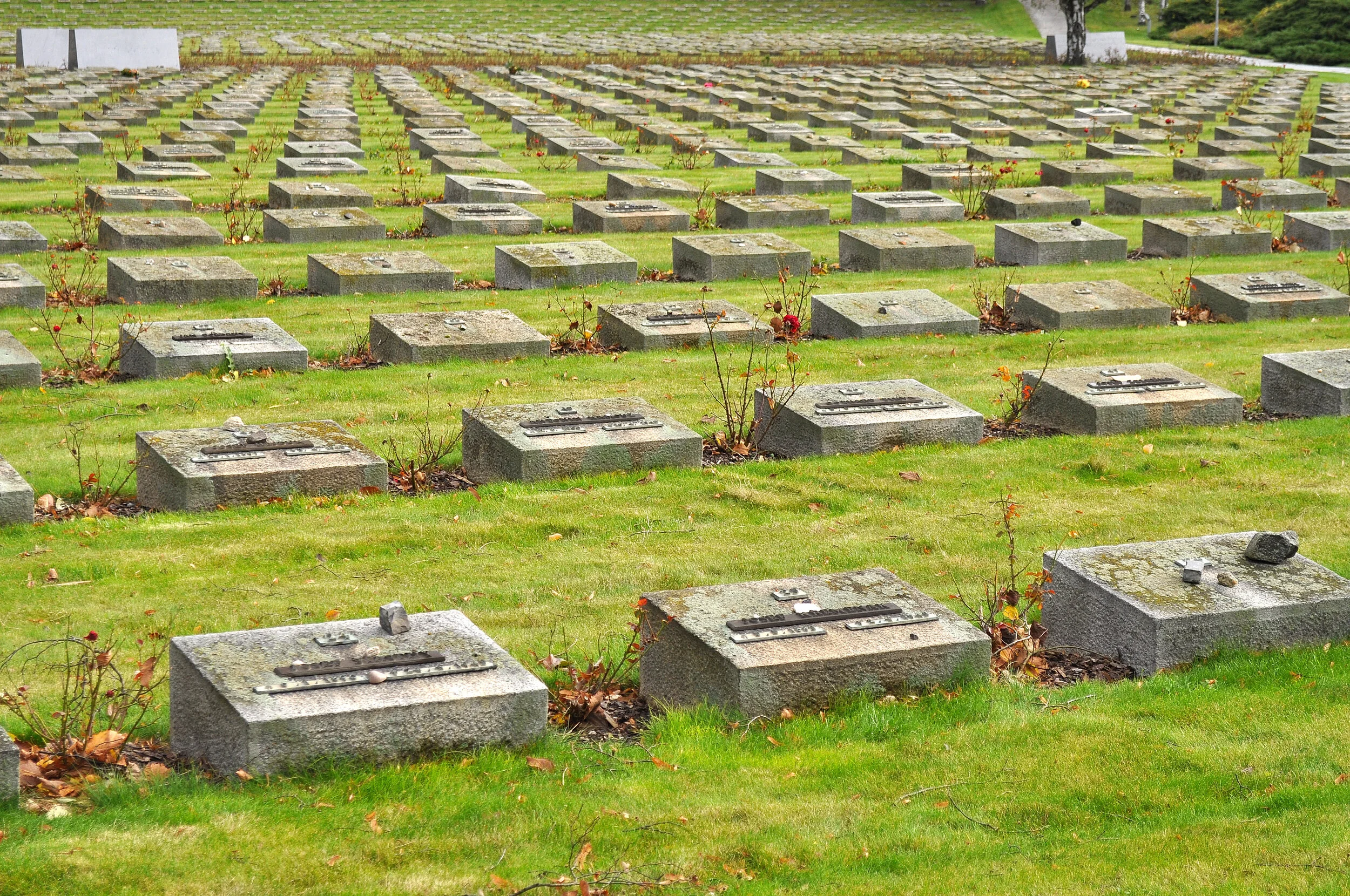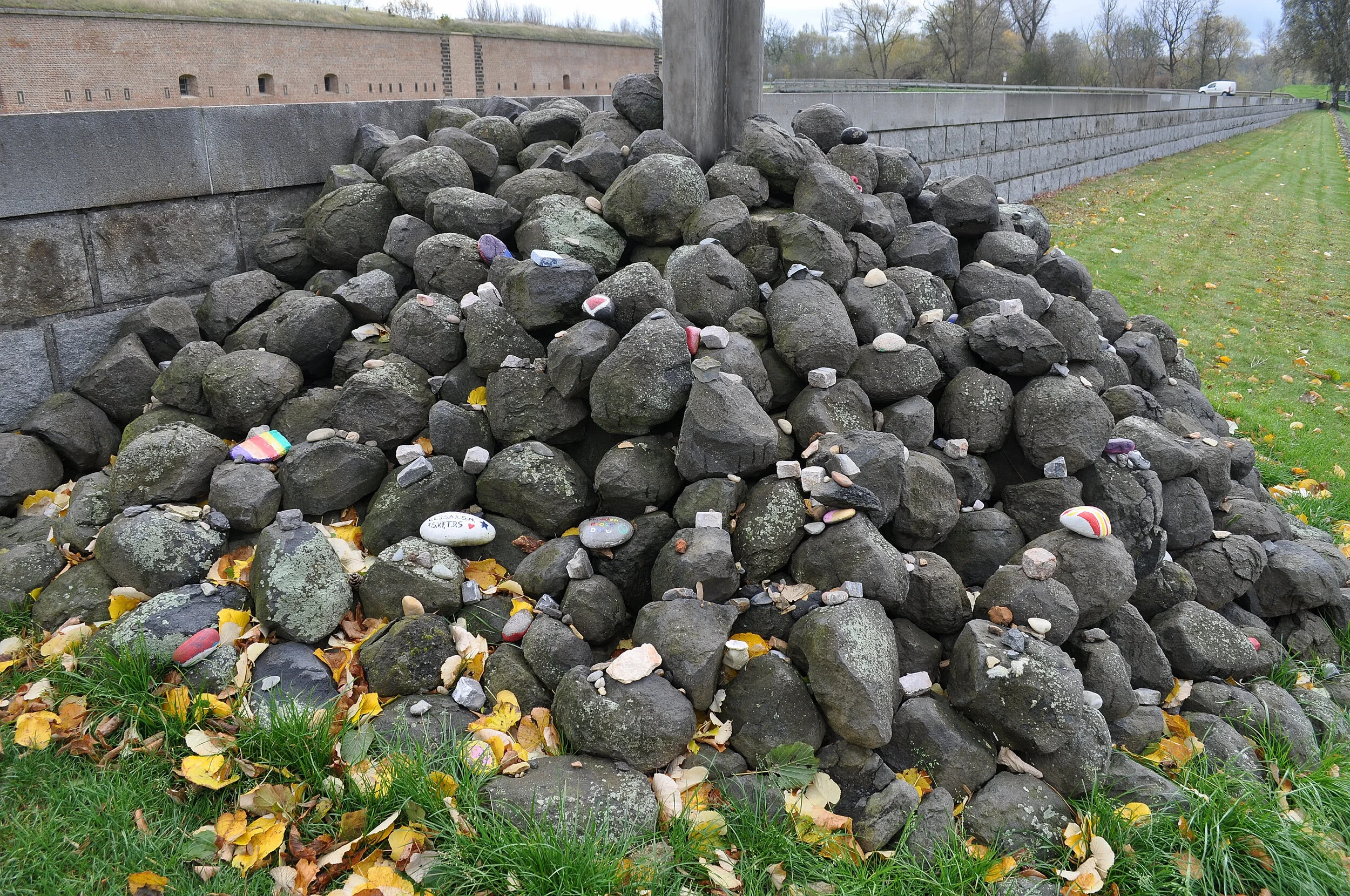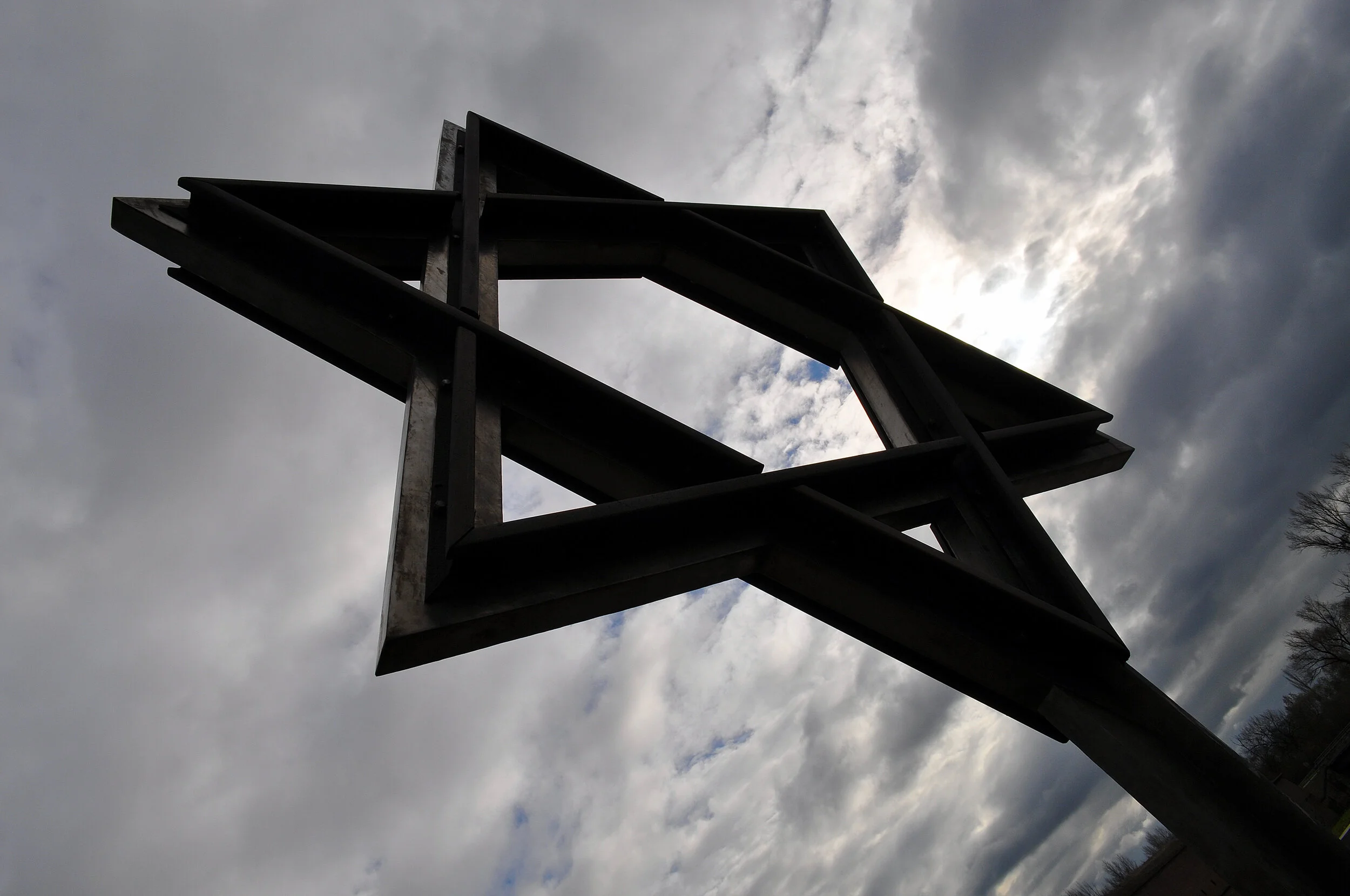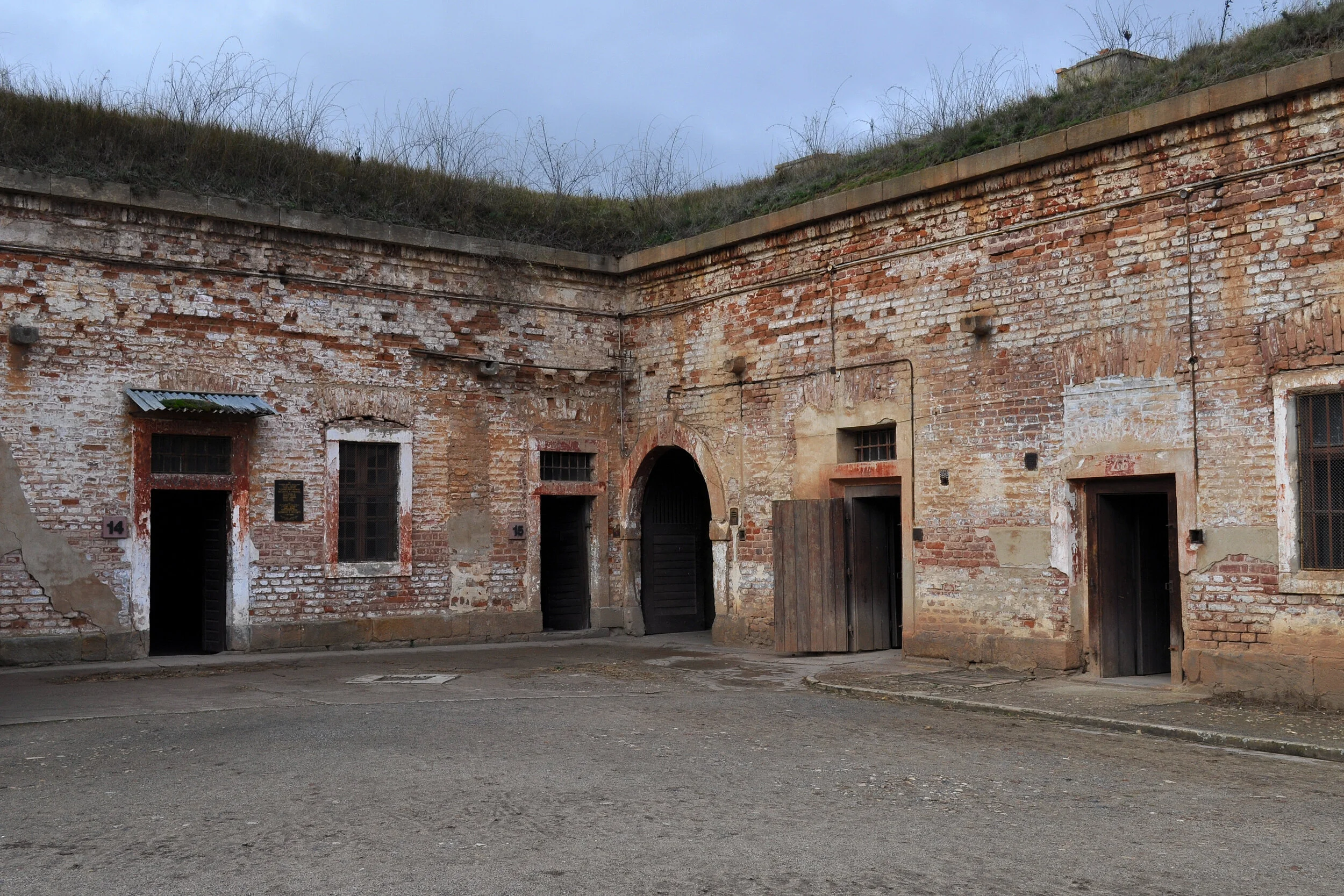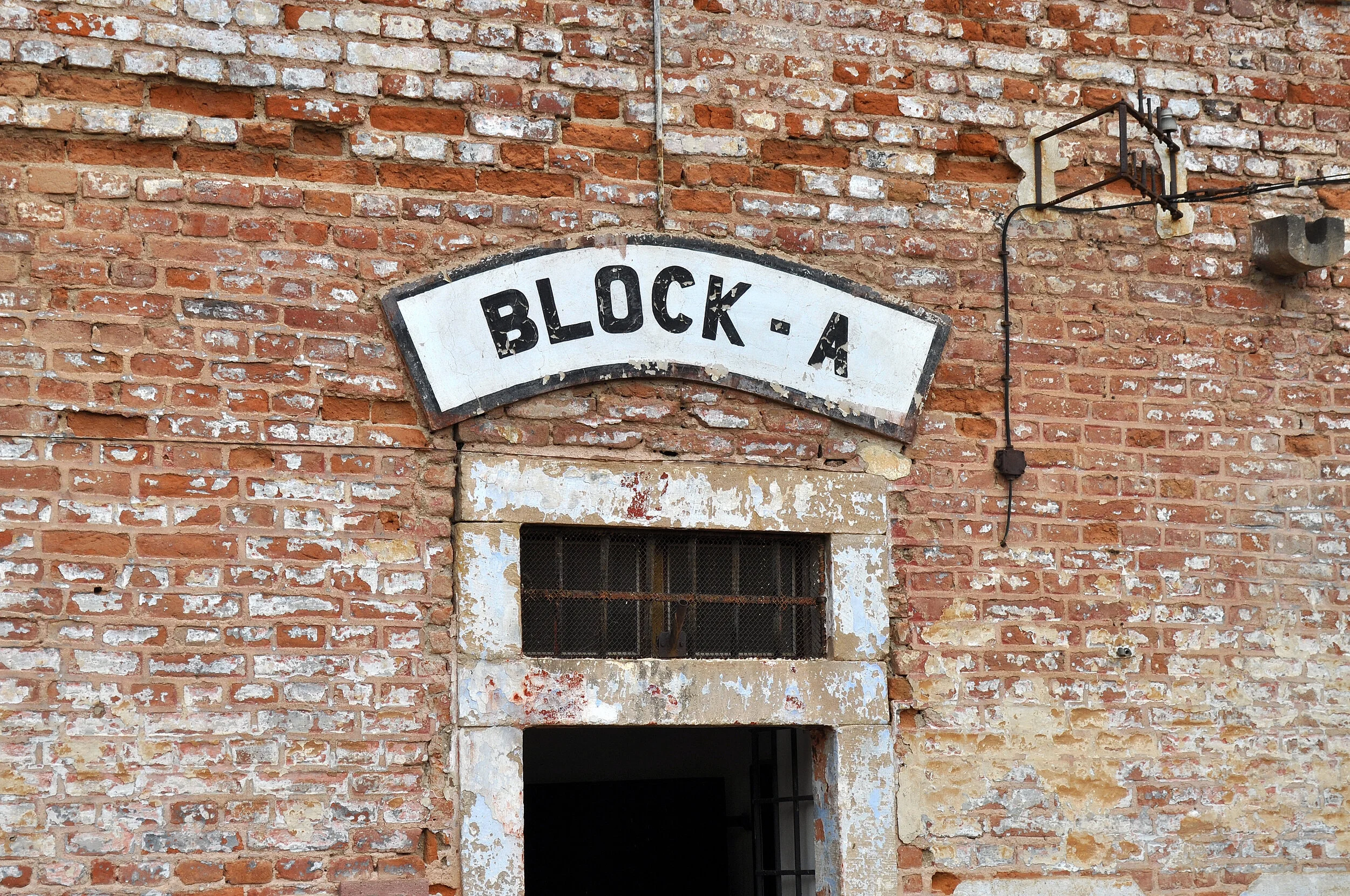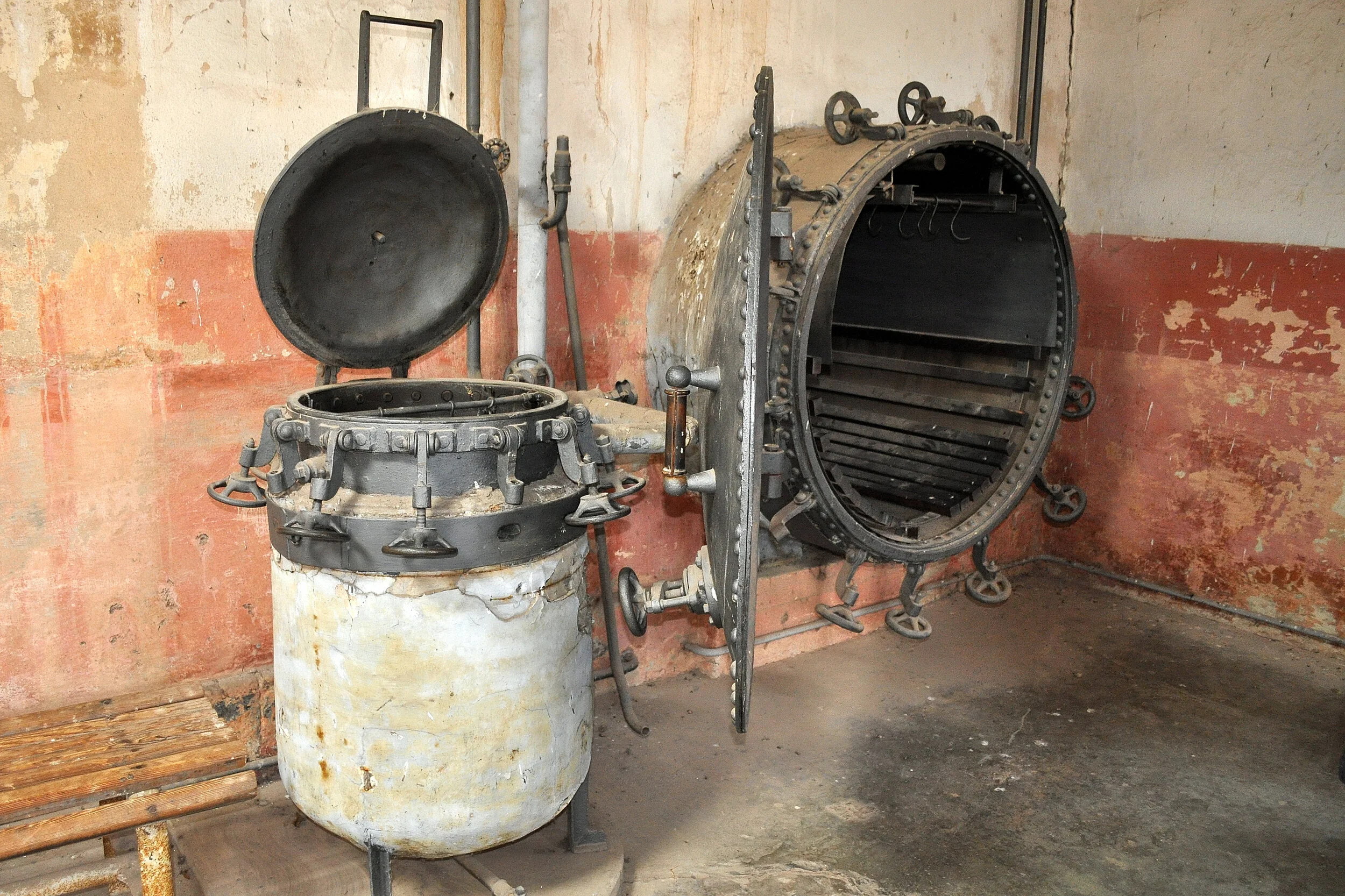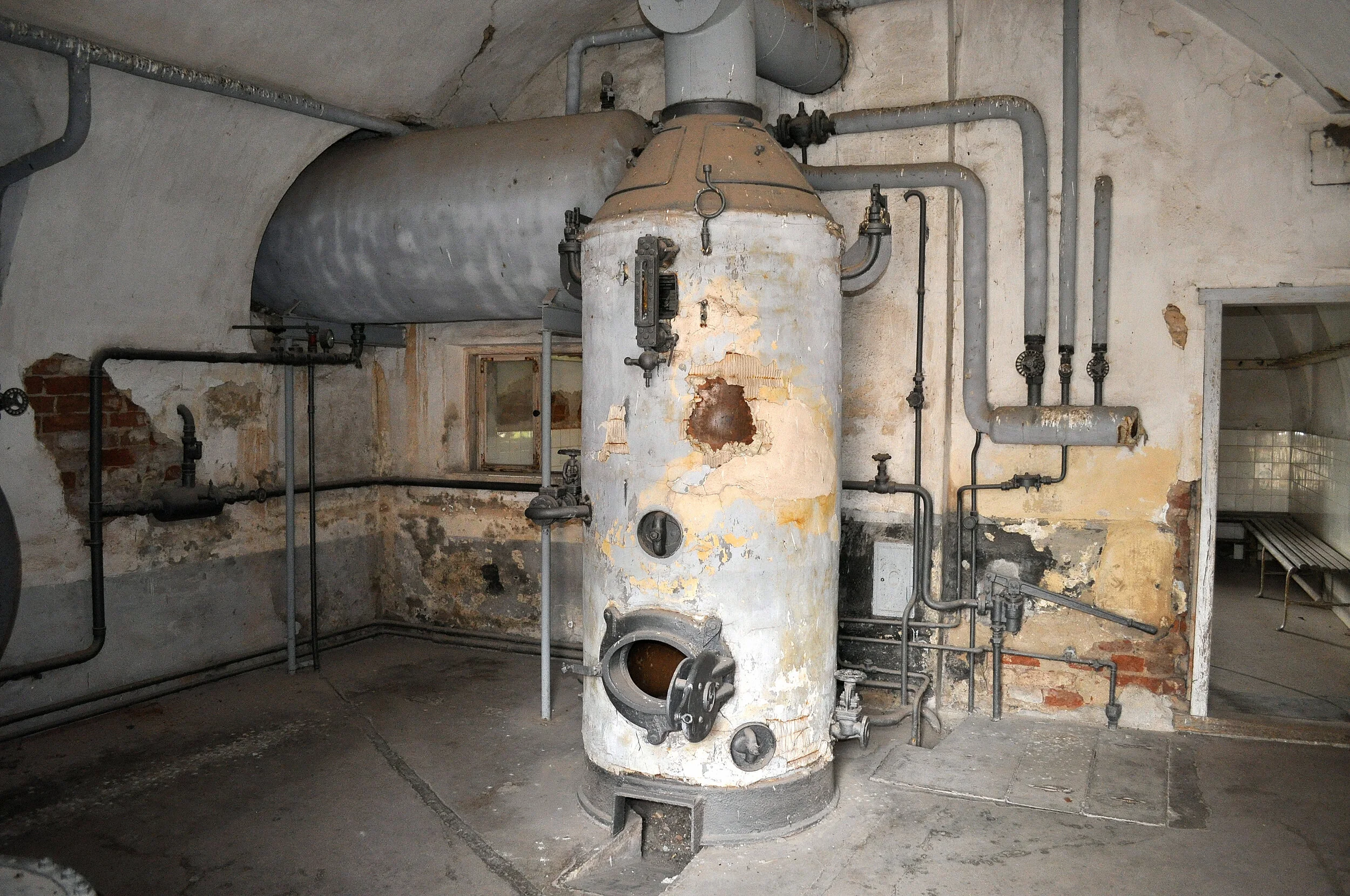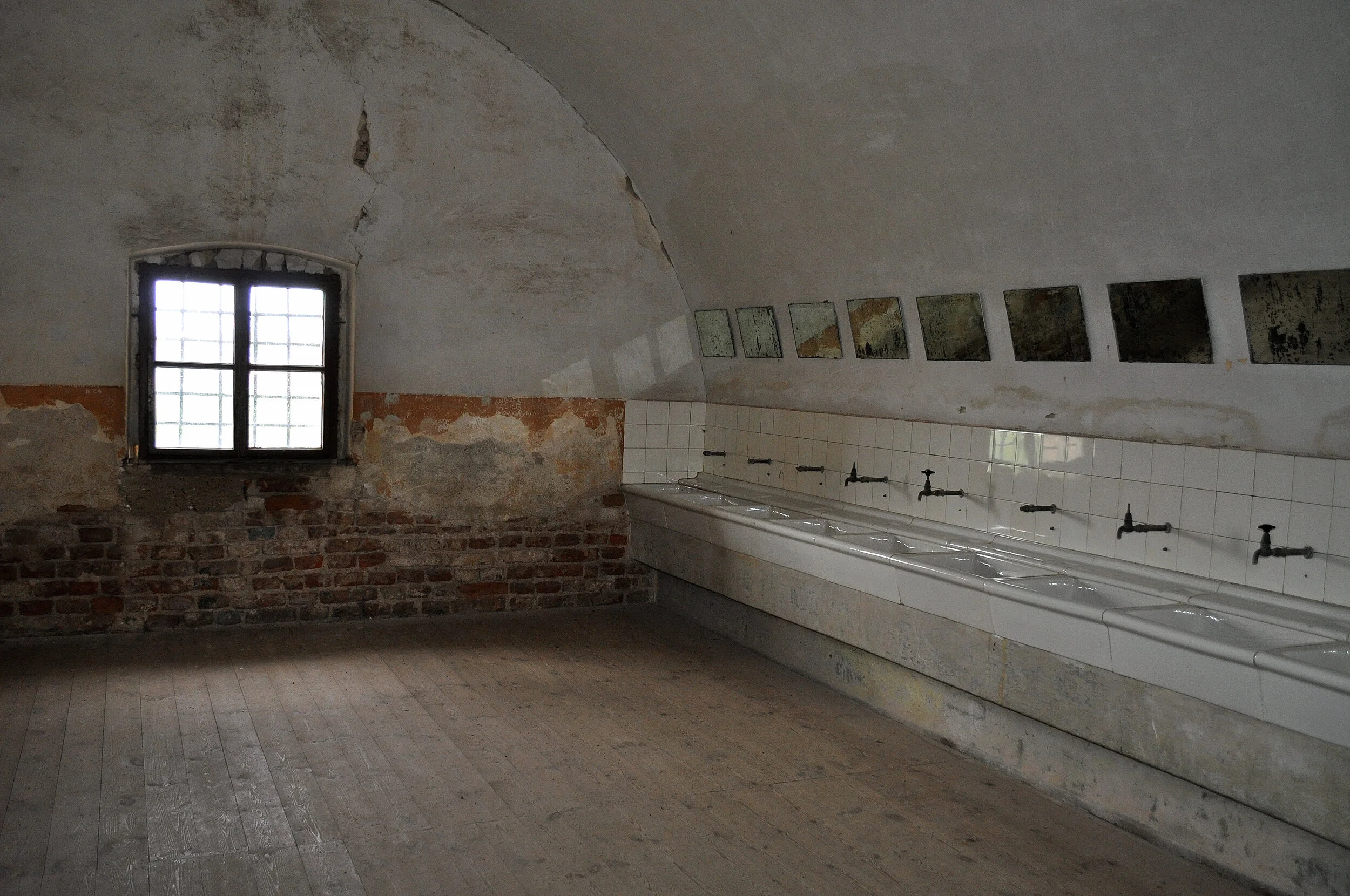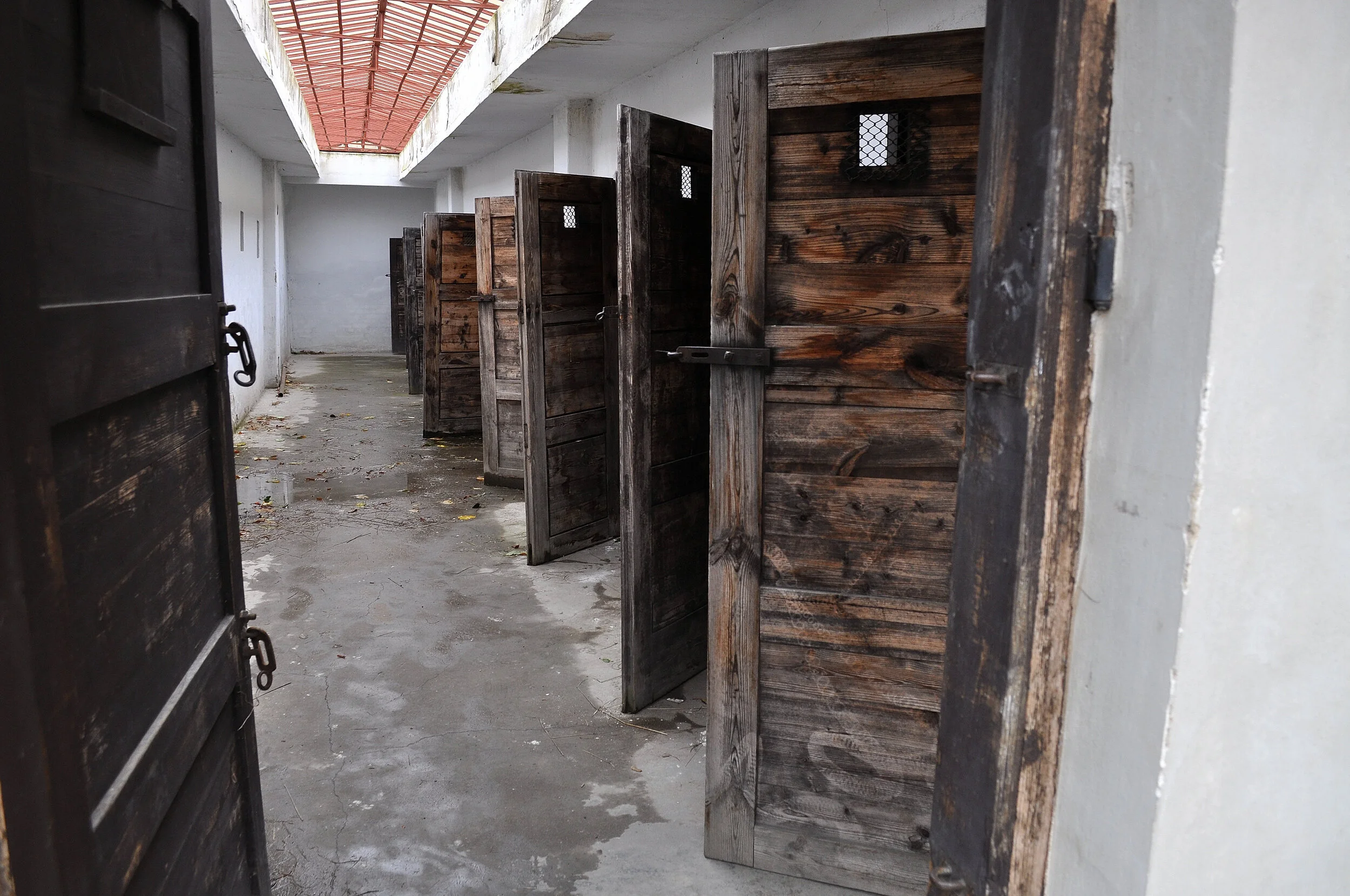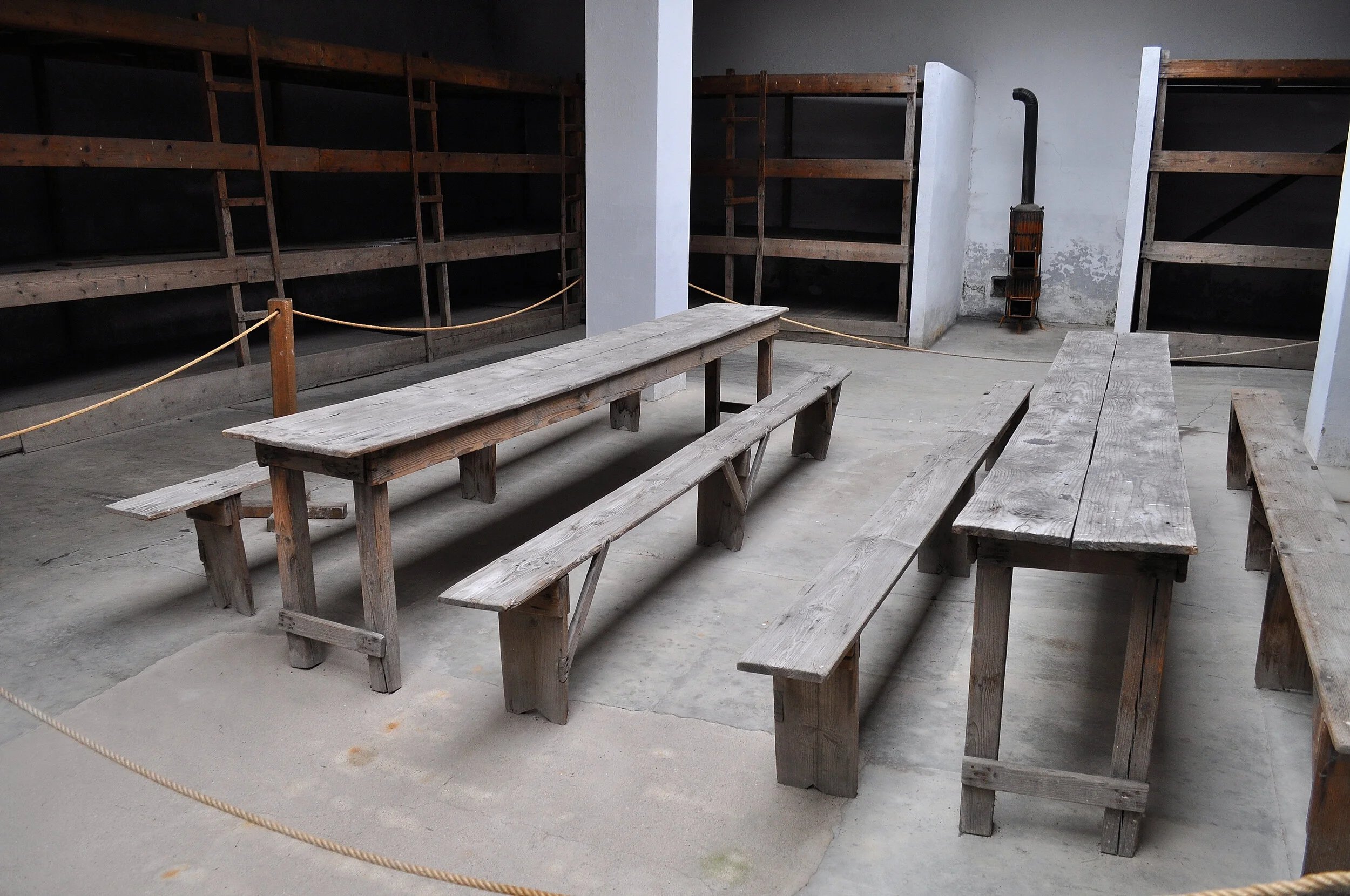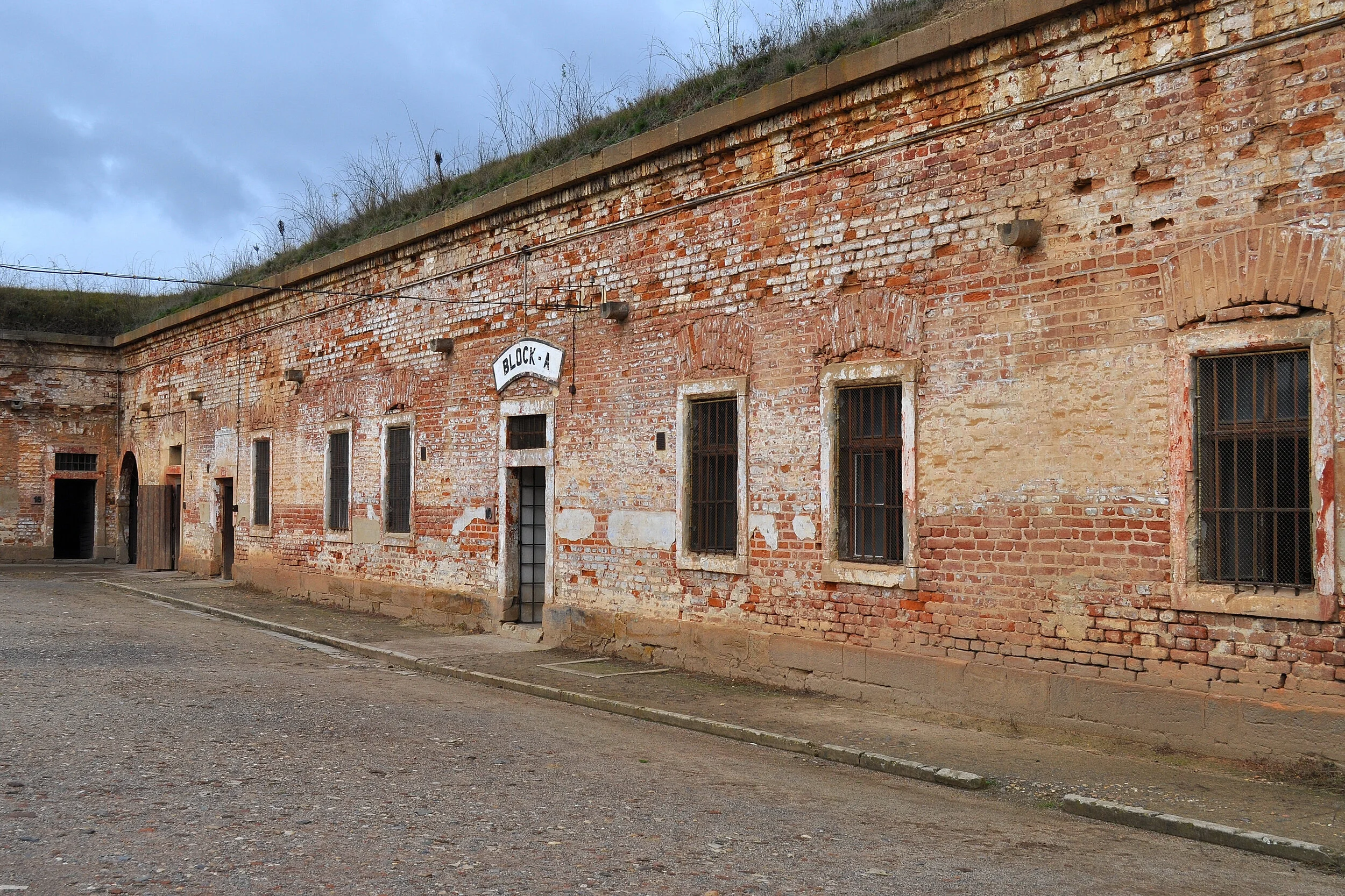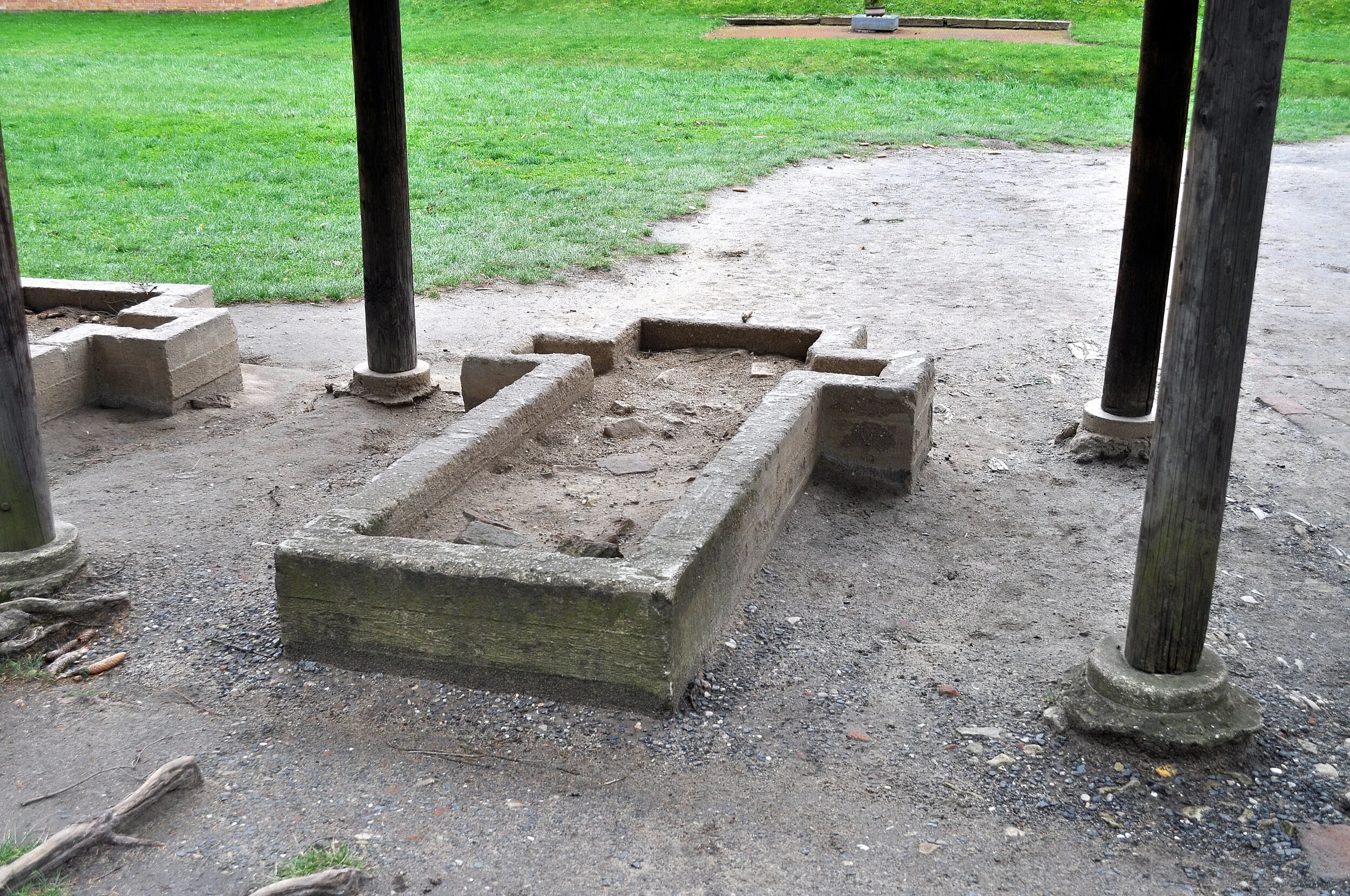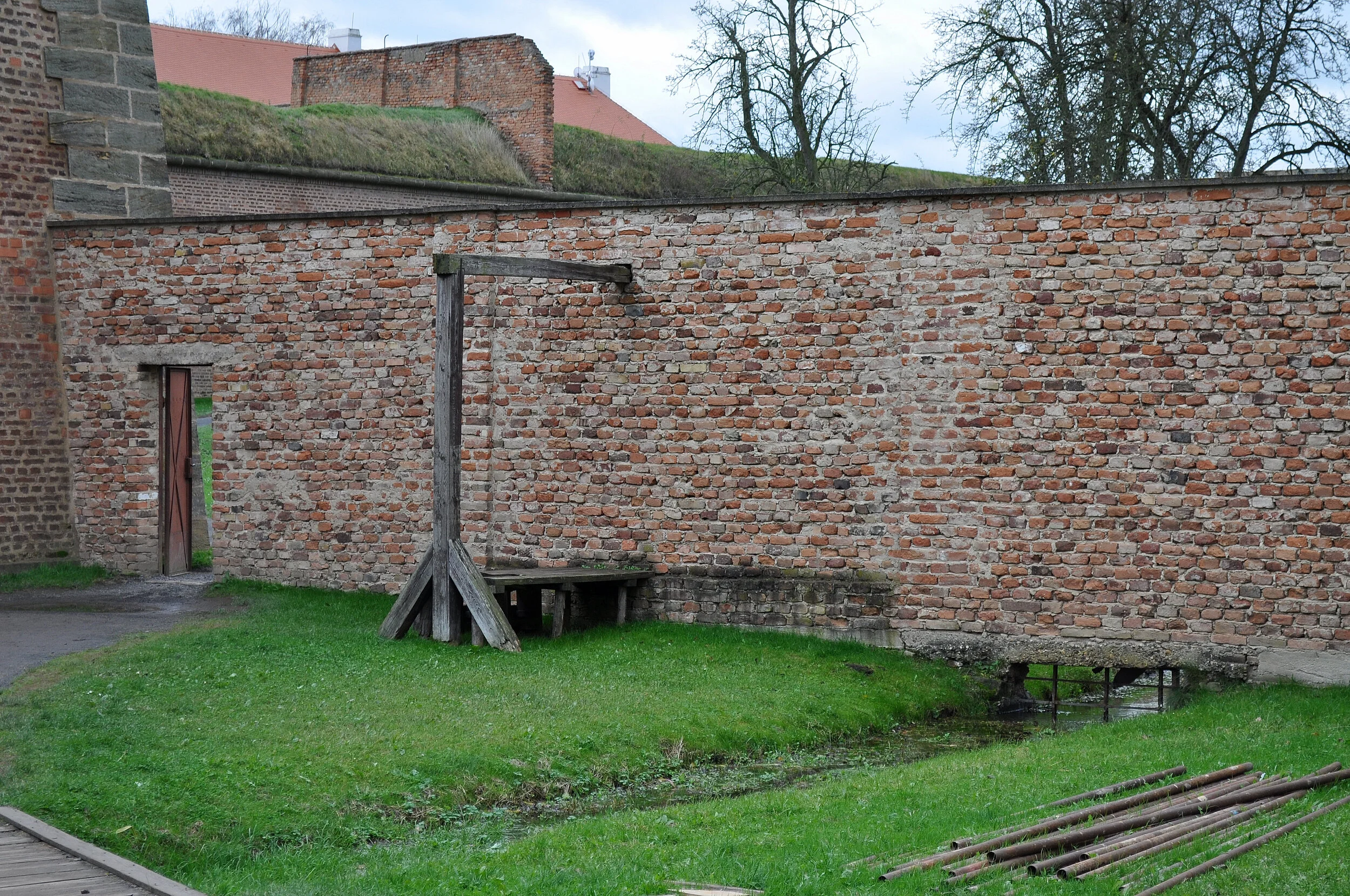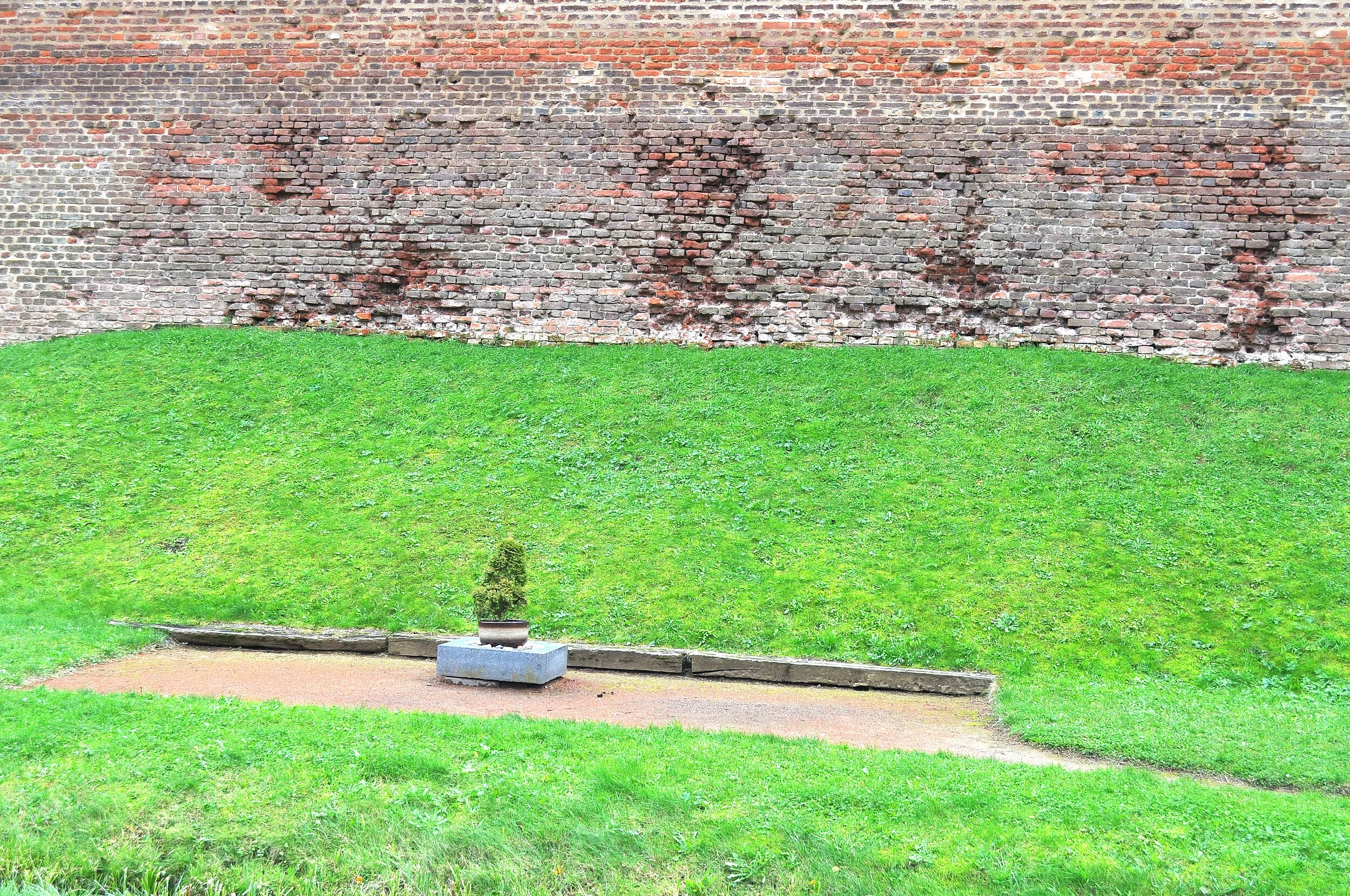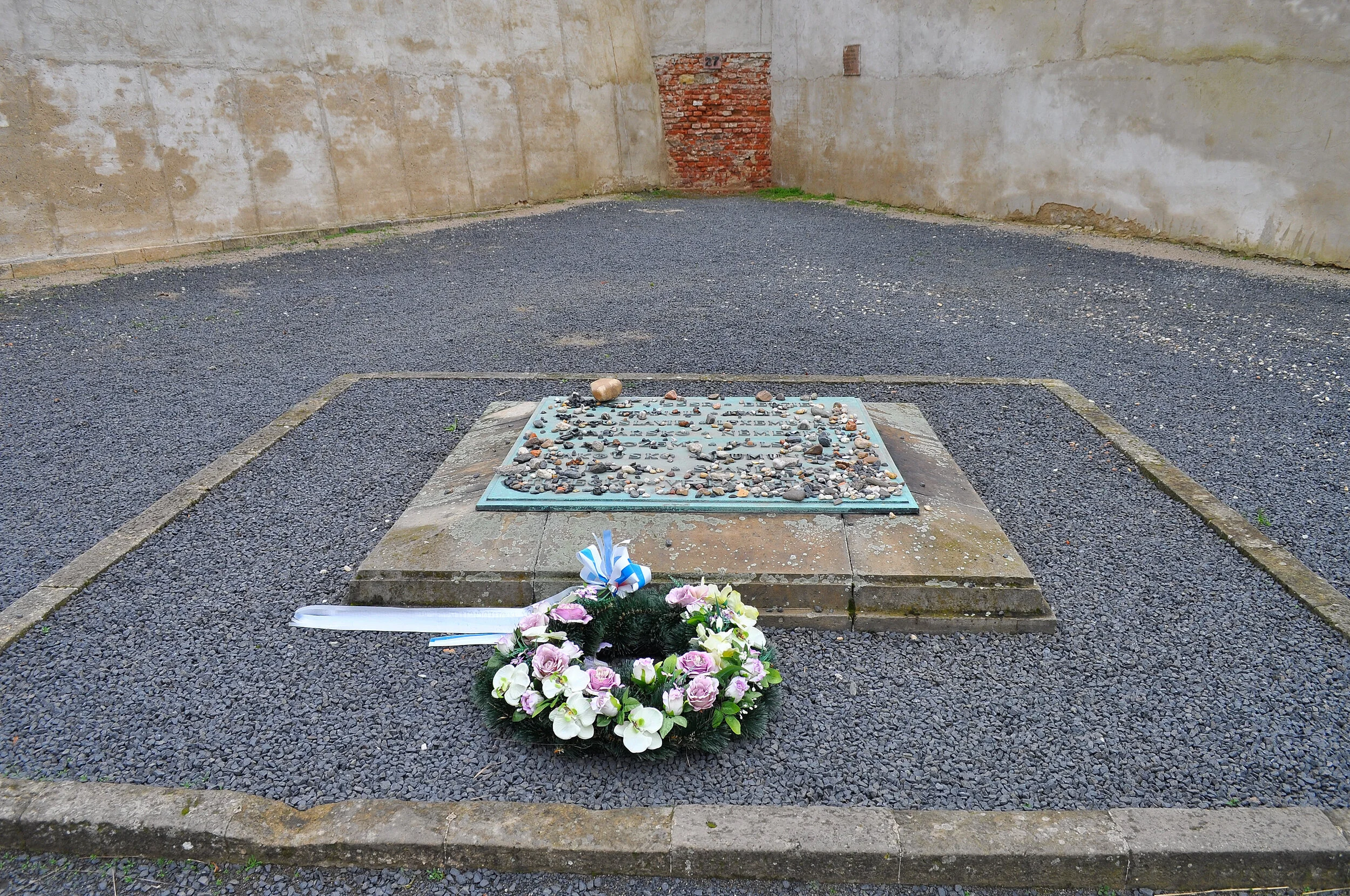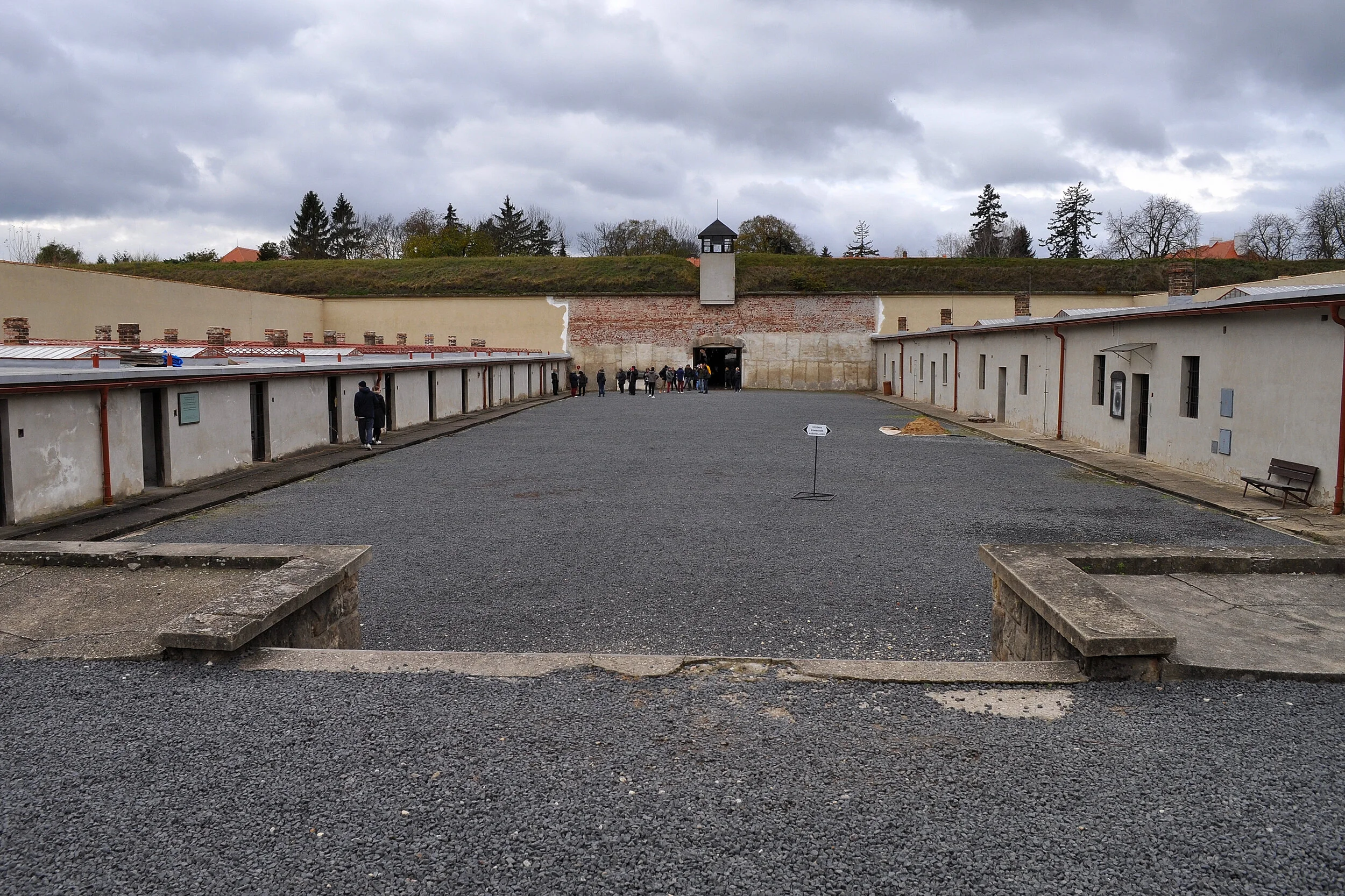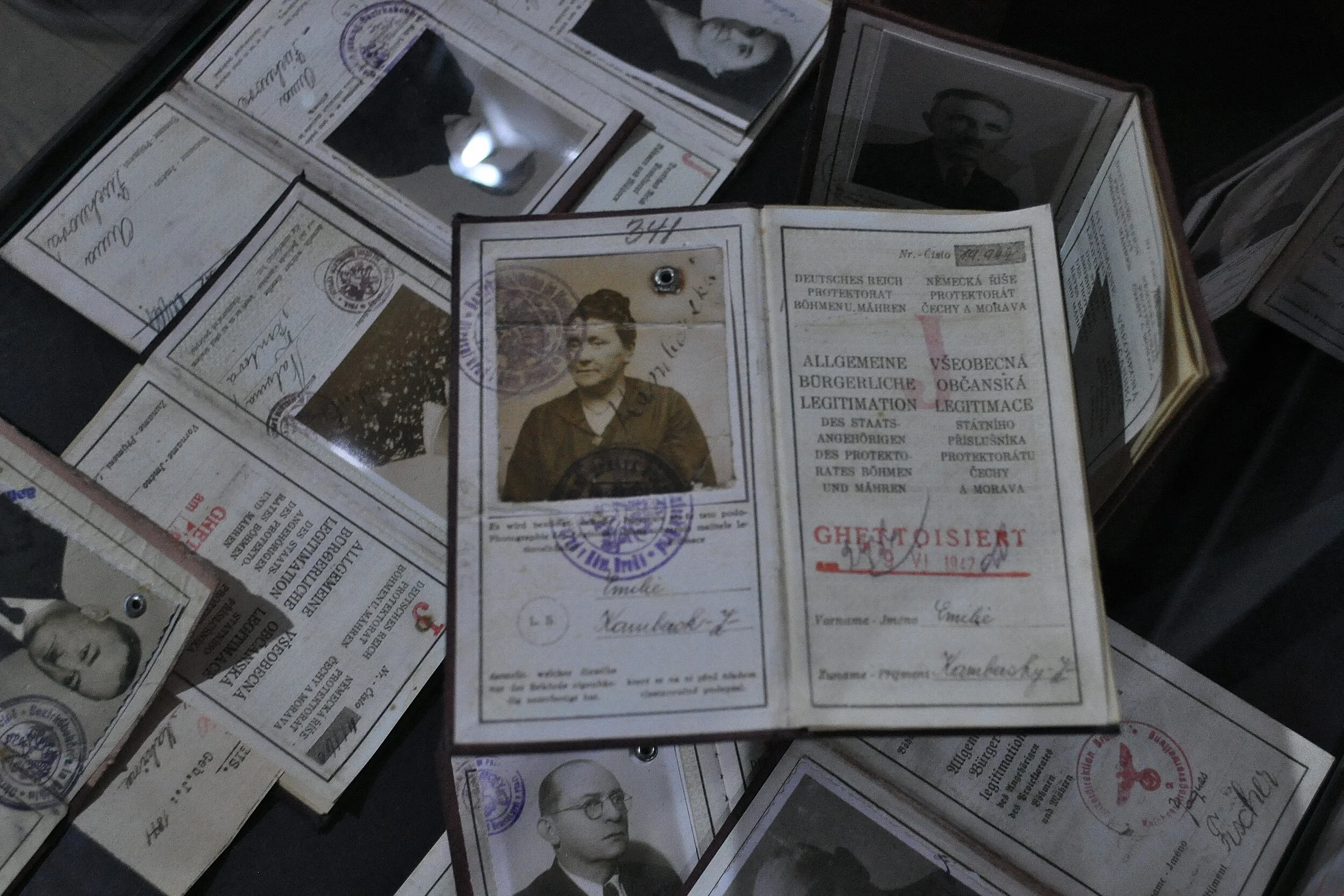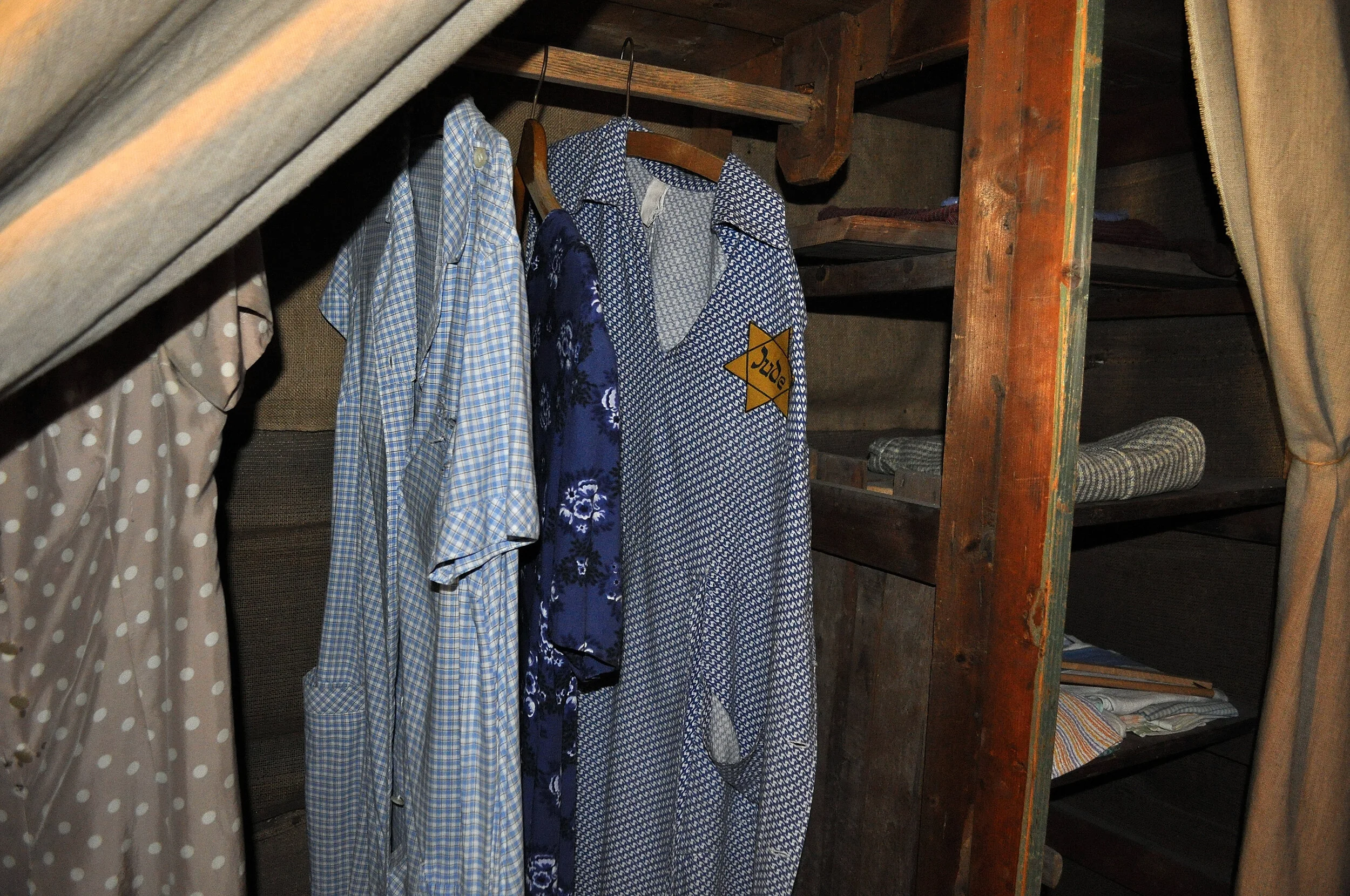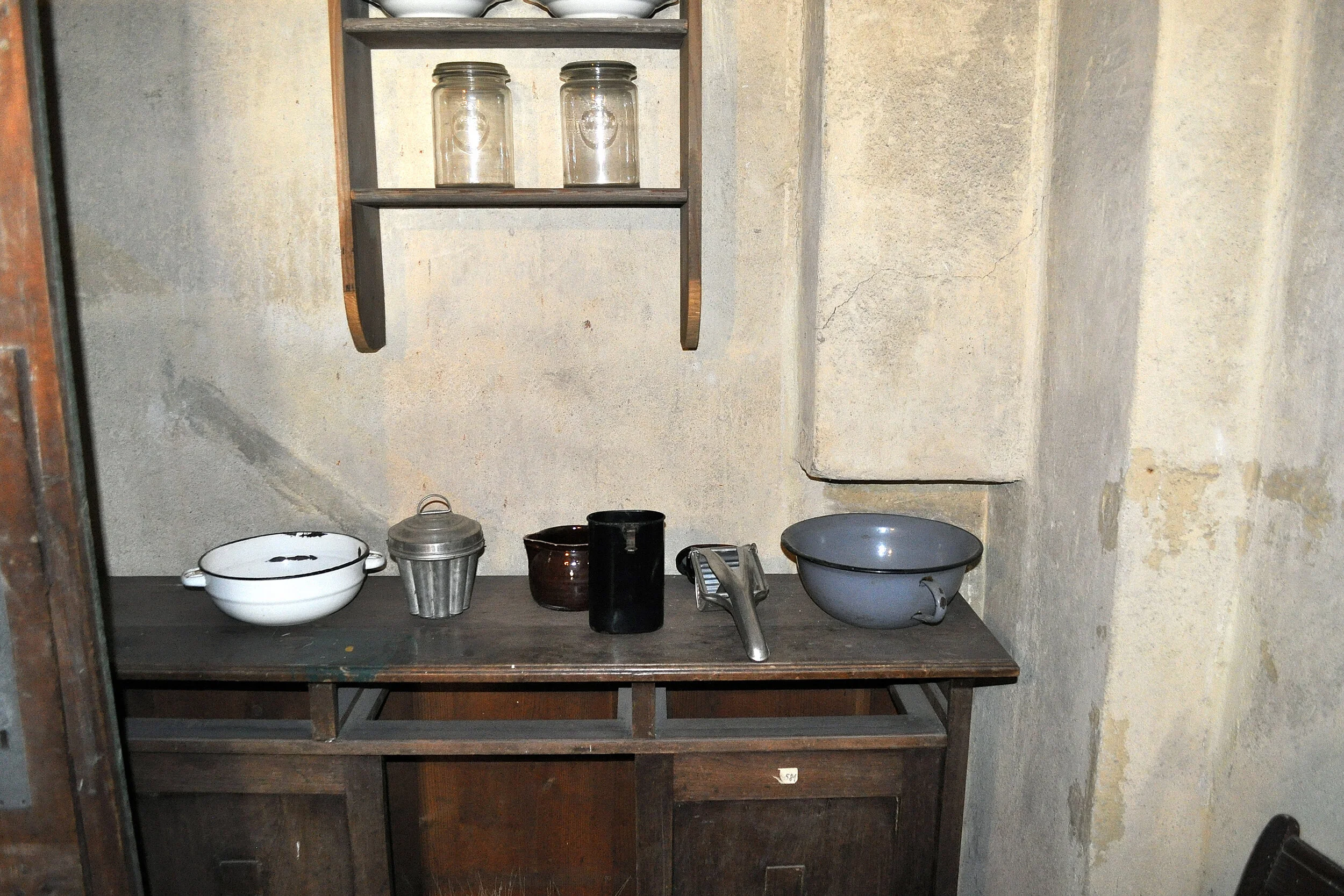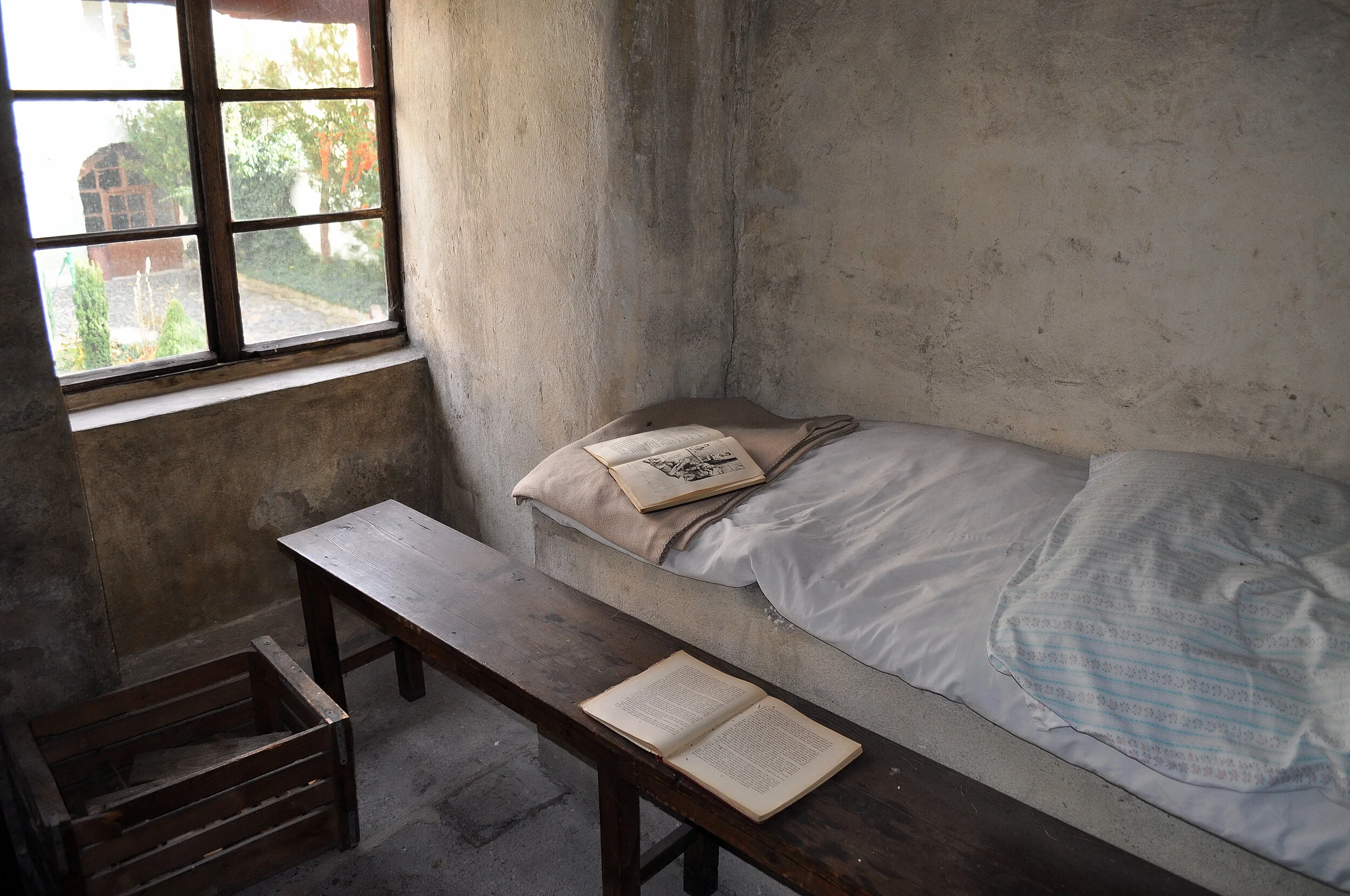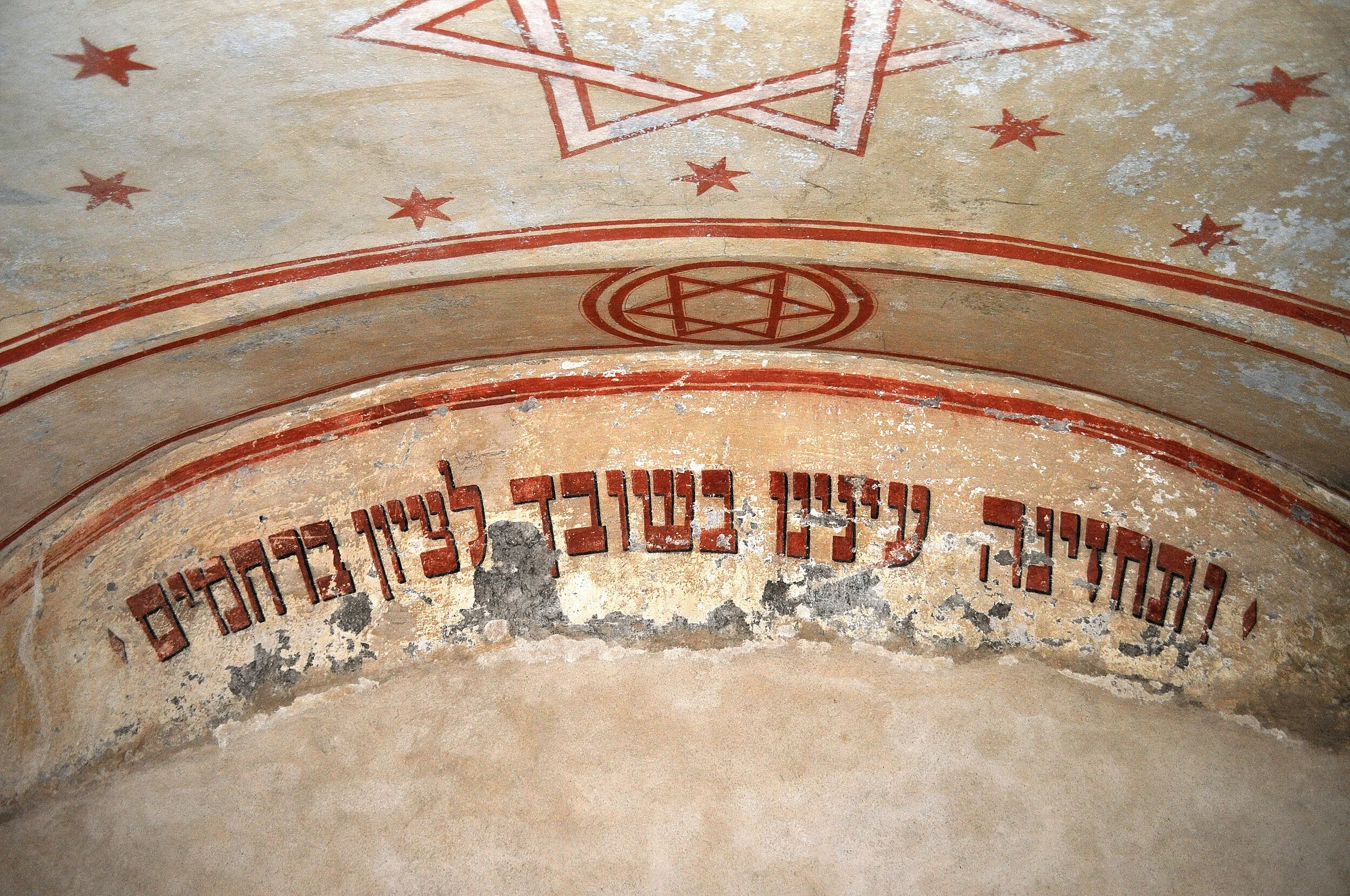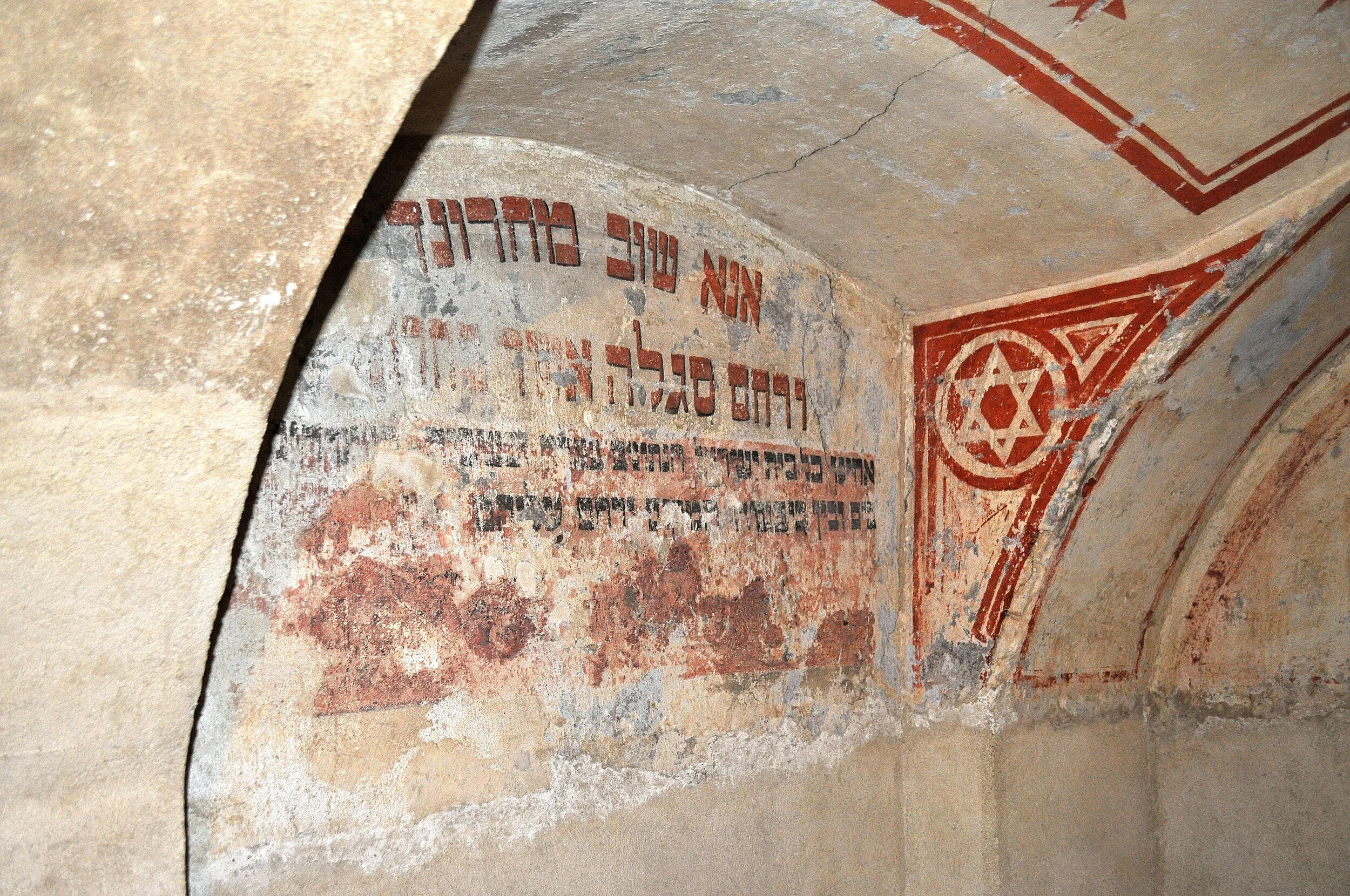Terezín
Piero: an early wake-up on our last day in Prague to reach the starting point of our tour to Terezín. The journey takes about an hour (it’s 60 kilometers from Prague), and around 9 a.m. we arrive in front of the camp entrance.
Angela: the Theresienstadt concentration camp was an internment and deportation facility used by German forces during World War II. The Gestapo took control on June 10, 1940, transforming the "Small Fortress" into a prison. The town of Terezín, surrounding the fortress, became a place where many Central European Jewish artists, intellectuals, painters, writers, musicians, and a large number of children were concentrated. Nazi propaganda presented Terezín as an exemplary Jewish settlement, but in reality, it was a gathering and transit camp sending prisoners mainly to the extermination camps of Treblinka and Auschwitz. Approximately 155,000 Jews passed through Theresienstadt until its liberation on May 8, 1945; of these, 35,440 died there, while about 90,000 were deported. These are staggering numbers for a place the Nazi propaganda showcased to inspectors and the world—even through a film—as a welcoming city, a “gift from Hitler to the Jews.”
Piero: the Terezín fortress was built in the late 18th century by order of the Austrian Emperor Joseph II (an ironic coincidence, since he had eliminated discrimination against Jews…) in honor of his mother, Maria Theresa of Austria (in Czech, Teresa is “Terezín”). The structure is divided into two main parts called the "Large Fortress" and the "Small Fortress," and was designed to defend Prague from Prussian attacks coming from the north. A century later, the Small Fortress was transformed by the Habsburg monarchy into a maximum-security prison for military prisoners and political opponents of the monarchy. Among its most famous “guests” was Gavrilo Princip, who carried out the 1914 Sarajevo assassination that killed Archduke Franz Ferdinand and his wife Sophie—an event considered the casus belli of World War I.
Angela: in front of the camp entrance lies a vast and silent Jewish cemetery and a large Star of David. At the entrance of the Small Fortress, we are greeted by the Nazi motto found in most concentration camps: “Arbeit Macht Frei” (“Work sets you free”). Living conditions inside the enormous dormitories were inhuman: the three- or four-tier bunk beds where Jews were crammed remain, with dirt and disease being daily realities. Other parts of the camp were used as infirmaries, workshops, isolation cells, a morgue, and the infamous communal showers—which were actually brutal gas chambers used by the Nazis for mass extermination. The washbasins and communal toilets are still clearly visible, in stark contrast to the German officers’ quarters, equipped with comforts and a swimming pool. The place where executions were carried out is particularly striking, with intact soldier stations and a wall riddled with bullet holes opposite. We complete our harrowing visit by walking through an underground tunnel about one kilometer long.
Piero: outside the Small Fortress, we visit the Terezín Memorial Museum, where documents, objects, and testimonies of every kind from that era are collected.
Angela: to conclude, we visit a typical house of the ghetto, preserved intact with all the furnishings and clothes of its former inhabitants.
Piero: visiting the Terezín concentration camp allows even the kids to personally experience one of the most significant sites of one of the darkest and most atrocious periods in modern history, bringing to mind the tragic events that made this small Czech town a protagonist. The ghetto museum and the Small Fortress clearly convey the harrowing atrocities that Jewish prisoners were forced to endure in this camp during the Holocaust. The feelings we experienced during the visit were undoubtedly very strong, especially for the kids, and will help us never forget what really happened, serving as a warning for the future.
Angela: on the return trip to Prague, after lunch, we take time to reflect on what we have seen.
Piero: the beauty of the city, once we arrive at the Old Town Square, allows us to return to a cheerful atmosphere, surely helped by discovering one of Prague’s typical street sweets: the trdlo, unpronounceable but delicious!
Angela: the Bohemian pastry (I prefer to call it that) is a sort of sweet bread prepared by wrapping dough around a special roller; the outside is sprinkled with sugar and cinnamon, while the inside can be filled with cream or Nutella. A true delight! We eat a couple to sweeten our day...
Piero: at this point, we are at the end of our journey.
Angela: Prague gave us three days in a fantastic atmosphere!
Piero: we discovered it is the city of a hundred towers, a magical city, a wonderful city that envelops visitors with its charm and elegance. Churches, castles, and palaces are all splendid witnesses to a great millennial history. We found how its almost surreal atmosphere captivates and enchants at every corner, every alley, every square. We are confirmed that Prague is without a doubt one of the most beautiful cities in Europe.





